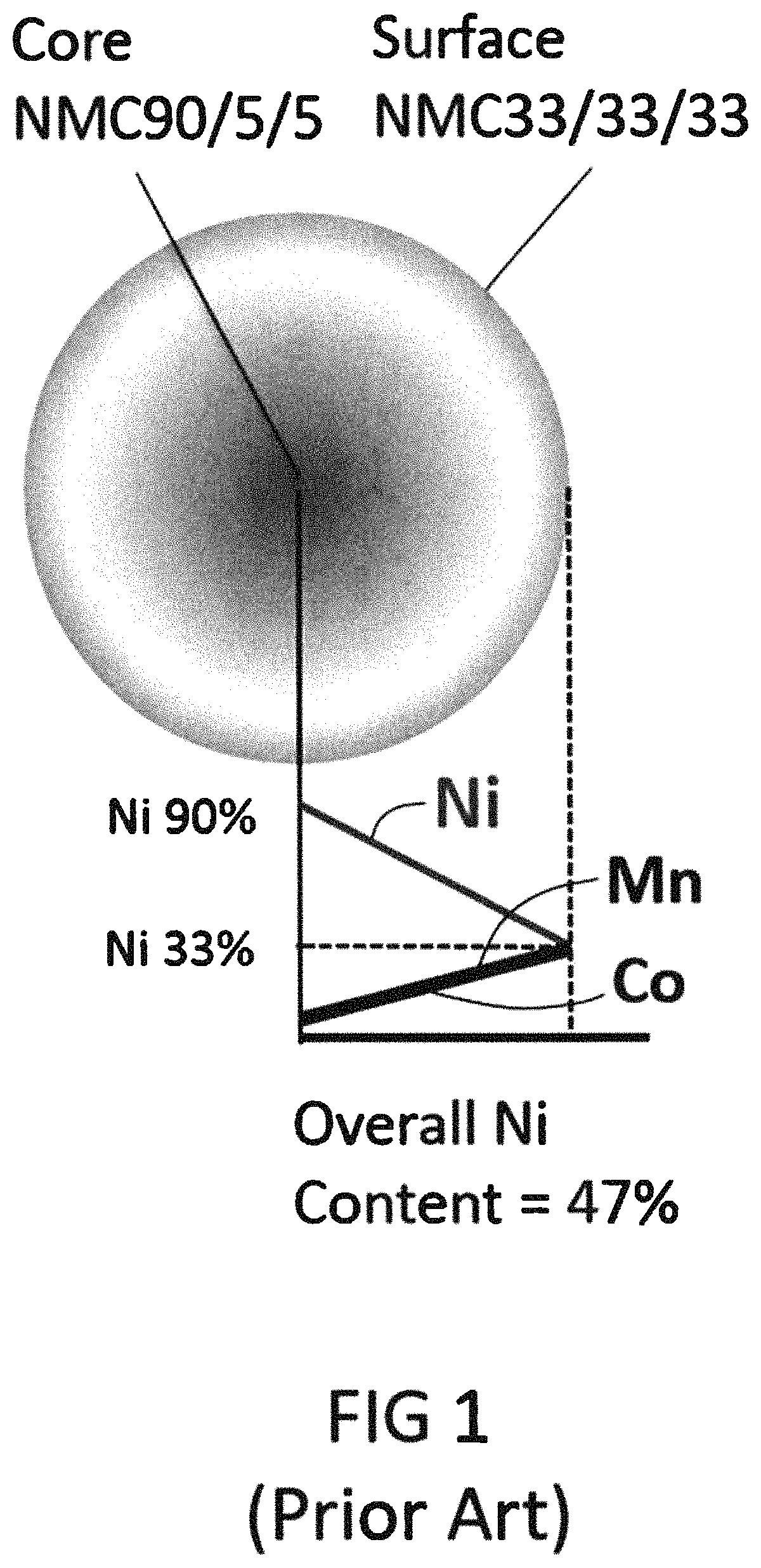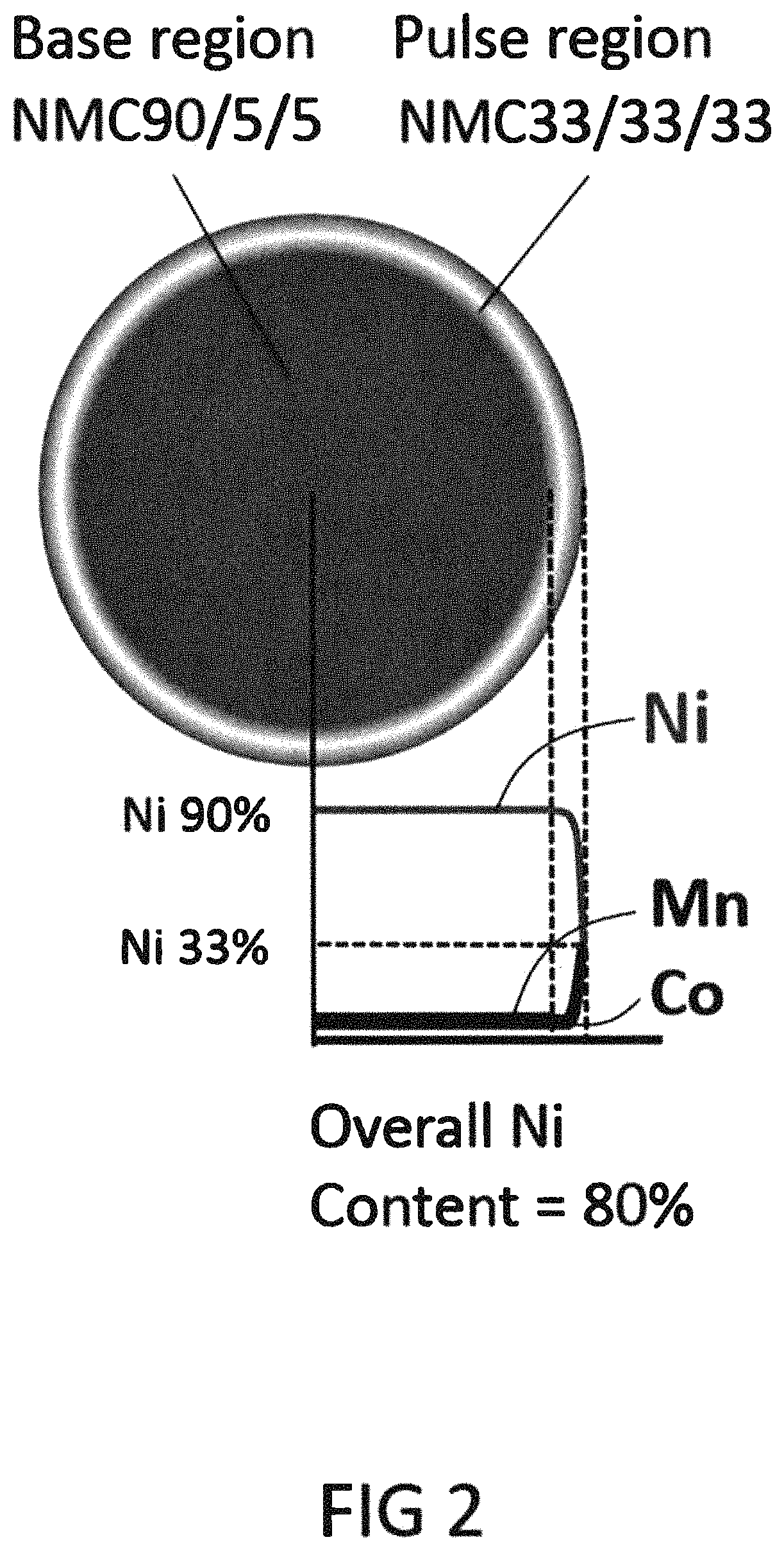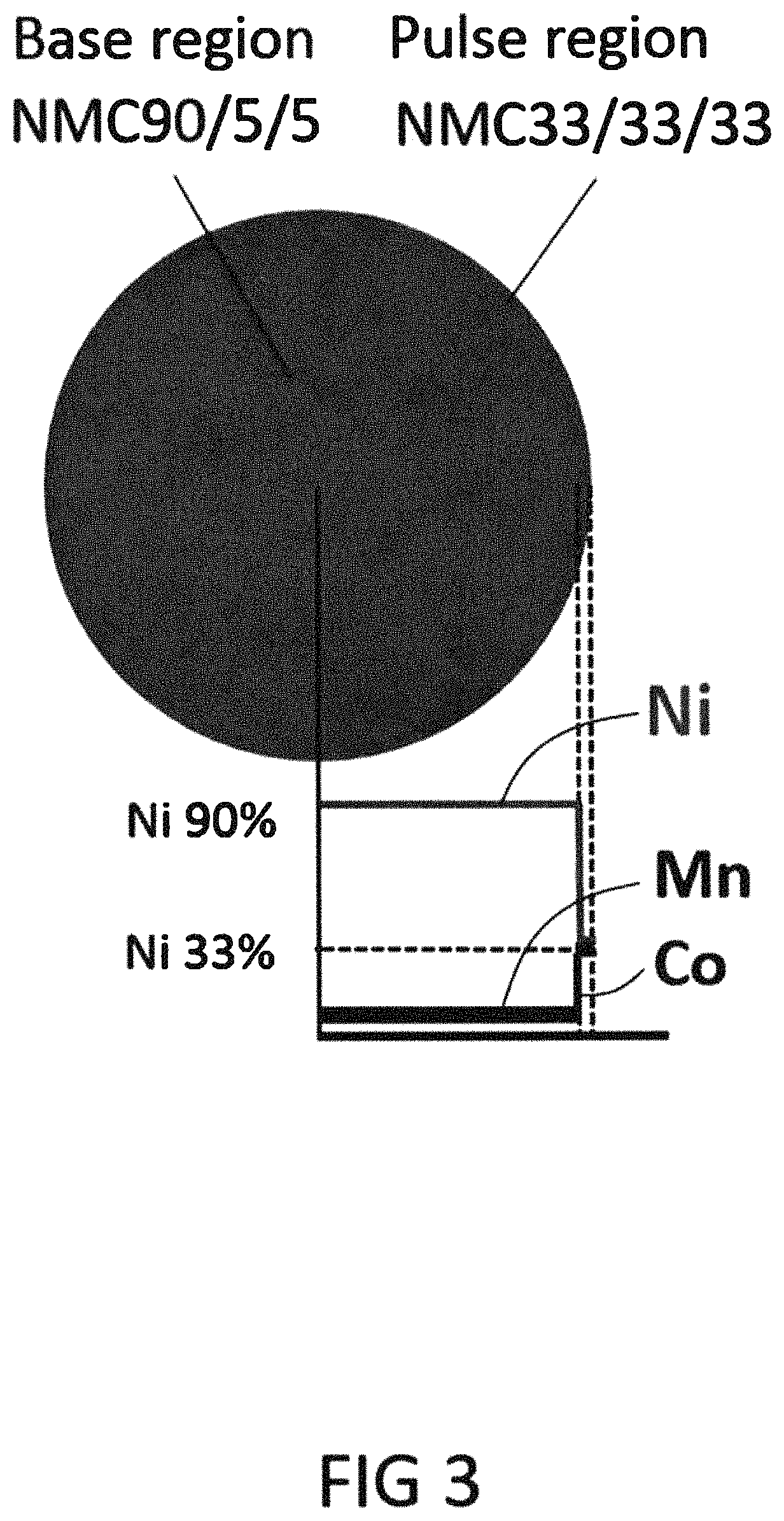Tangent gradient concentration material for battery, digital gradient concentration material for battery
a technology of gradient concentration and battery, applied in the field of cathode, can solve the problems of reducing capacity, significant challenges to improve capacity retention during cycling and thermal abuse tolerance, and reducing capacity, so as to achieve high capacity, high stability, and optimized specific capacity and thermal stability.
- Summary
- Abstract
- Description
- Claims
- Application Information
AI Technical Summary
Benefits of technology
Problems solved by technology
Method used
Image
Examples
example 1
re of Ni-Rich NMC Cathode Particle with Tangent Concentration Approach as a Pulsed Compositional Change Near the Particle Surface
[0105]An advanced CSTR system and a batch reactor were used, supplied with nitrogen gas, maintained at a temperature of 50° C., and stirred at 800 rpm. In order to synthesize the base phase of the secondary particles, a 2M metal aqueous solution for base phase mixed with 90:5:5 molar ratio of nickel sulfate, cobalt sulfate and manganese sulfate was continuously introduced into the CSTR at a flow rate of 0.2 L / hr and a 10 M ammonia aqueous solution was continuously fed into the CSTR at a flow rate of 0.07 L / hr.
[0106]When the particle size of the metal hydroxide composite for base secondary particle reached 5 to 6 μm, these materials are transferred to a batch reactor and a 2M aqueous solution for pulse phase mixed with 33:33:33 molar ratio of nickel sulfate, cobalt sulfate and manganese sulfate was continuously introduced into the batch reactor by gradually...
example 2
re of Ni-Rich NMC Cathode Particle with Step Concentration Approach as a Pulsed Compositional Change Near the Particle Surface
[0107]Two advanced CSTR systems were used, supplied with nitrogen gas, maintained at a temperature of 50° C., and stirred at 800 rpm. In order to synthesize the base phase of the secondary particles, a 2M metal aqueous solution for base phase mixed with 90:5:5 molar ratio of nickel sulfate, cobalt sulfate and manganese sulfate was continuously introduced into the first CSTR at a flow rate of 0.2 L / hr and a 10 M ammonia aqueous solution was continuously fed into the first CSTR at a flow rate of 0.07 L / hr.
[0108]When the particle size of the metal hydroxide composite for base secondary particle reached 5 to 6 μm, these materials are transferred to the second CSTR and a 2M aqueous solution for pulse phase mixed with 33:33:33 molar ratio of nickel sulfate, cobalt sulfate and manganese sulfate was continuously introduced into the second CSTR. The resultant metal hy...
example 3
re of Ni-Rich NMC Cathode Particle with Multi-Step Concentration Approach as a Pulsed Compositional Change Near the Particle Surface
[0109]Three advanced CSTR systems were used, supplied with nitrogen gas, maintained at a temperature of 50° C., and stirred at 800 rpm. In order to synthesize the base phase of the secondary particles, a 2M metal aqueous solution for base phase mixed with 90:5:5 molar ratio of nickel sulfate, cobalt sulfate and manganese sulfate was continuously introduced into the first CSTR at a flow rate of 0.2 L / hr and a 10 M ammonia aqueous solution was continuously fed into the first CSTR at a flow rate of 0.07 L / hr. When the particle size of the metal hydroxide composite for base secondary particle reached 5 to 6 μm, these materials are transferred to the second CSTR and a 2M aqueous solution for the first pulse phase mixed with 80:10:10 molar ratio of nickel sulfate, cobalt sulfate and manganese sulfate was continuously introduced into the second CSTR.
[0110]When...
PUM
| Property | Measurement | Unit |
|---|---|---|
| diameter | aaaaa | aaaaa |
| diameter | aaaaa | aaaaa |
| weight percent | aaaaa | aaaaa |
Abstract
Description
Claims
Application Information
 Login to View More
Login to View More - R&D
- Intellectual Property
- Life Sciences
- Materials
- Tech Scout
- Unparalleled Data Quality
- Higher Quality Content
- 60% Fewer Hallucinations
Browse by: Latest US Patents, China's latest patents, Technical Efficacy Thesaurus, Application Domain, Technology Topic, Popular Technical Reports.
© 2025 PatSnap. All rights reserved.Legal|Privacy policy|Modern Slavery Act Transparency Statement|Sitemap|About US| Contact US: help@patsnap.com



